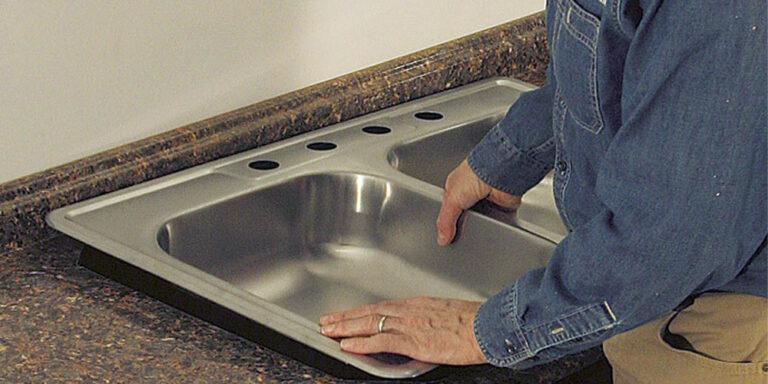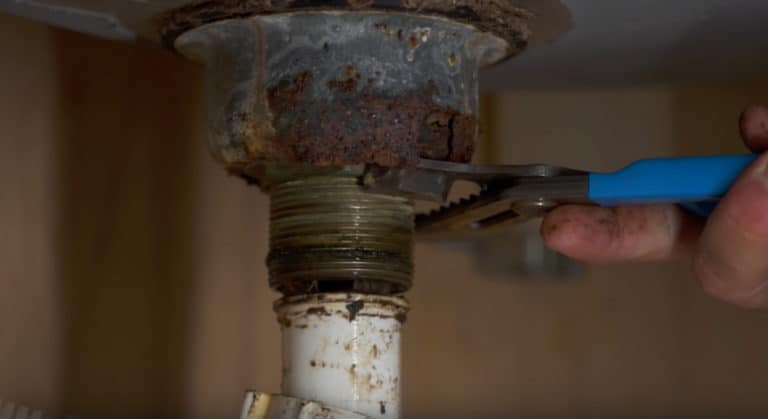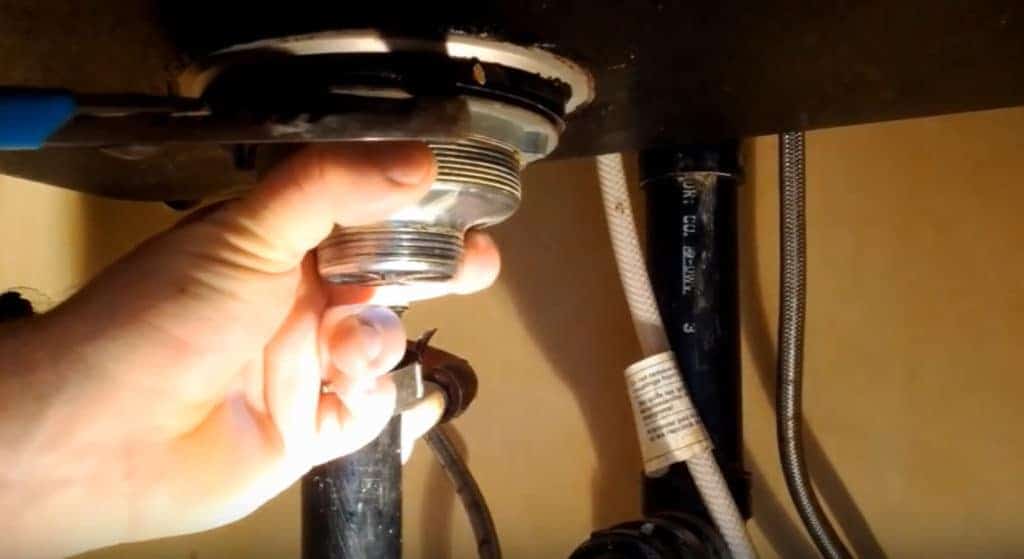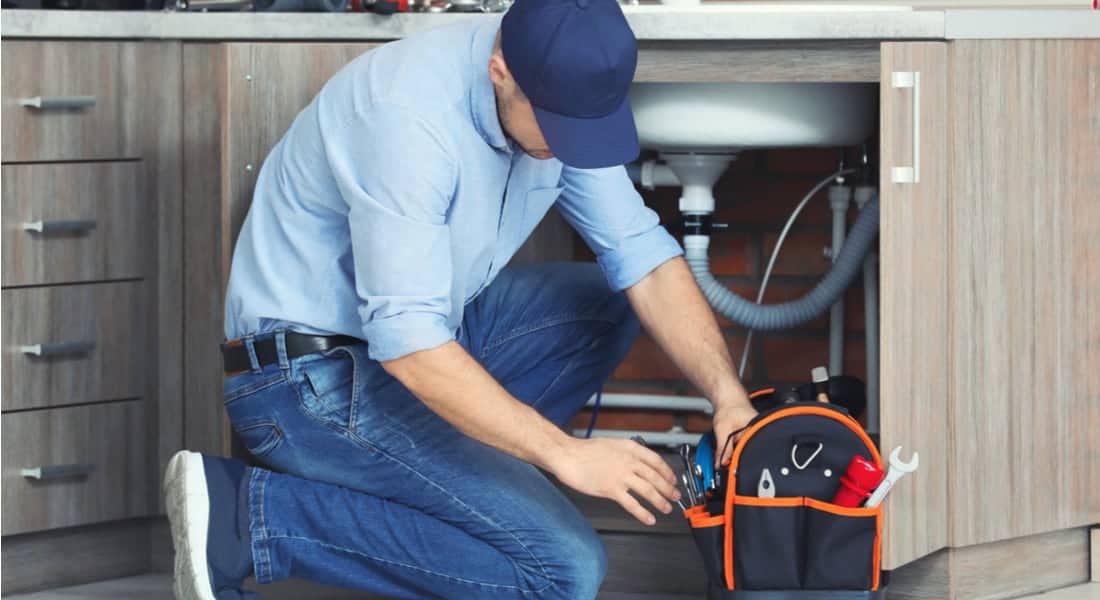Whether you're looking to update your kitchen or simply replacing a worn-out sink, removing a kitchen sink is a task that can be easily done with the right tools and knowledge. Follow this step-by-step guide to learn how to take out a kitchen sink like a pro.Removing a Kitchen Sink: A Step-by-Step Guide
Before you begin, make sure you have all the necessary tools and materials. This includes a wrench, pliers, screwdriver, and a bucket or container to catch any water or debris. 1. Start by turning off the water supply to your sink. This is usually located under the sink or in a nearby cabinet. 2. Next, disconnect the plumbing from the sink. Use pliers to loosen and remove any connections, and place them in your bucket or container. 3. If your sink is attached to the countertop, you will need to unscrew any mounting clips or brackets. These are usually located underneath the sink and can be removed with a screwdriver. 4. Once all connections and attachments have been removed, you can gently lift the sink up and out of the countertop. If the sink is caulked to the countertop, use a putty knife to carefully break the seal before lifting it out. 5. If you are also removing the faucet, use a wrench to loosen and remove the mounting nuts. You may also need to disconnect any water supply lines.How to Take Out a Kitchen Sink
Removing a kitchen sink can be a DIY project for those with some basic plumbing and handyman skills. However, if you are not confident in your abilities or are dealing with a complex plumbing system, it's always best to call a professional. Before attempting to remove your kitchen sink, make sure you have a good understanding of your plumbing system and how everything is connected. This will help you avoid any unnecessary mistakes or damage.DIY: Removing a Kitchen Sink
Here are some helpful tips and tricks to keep in mind when removing a kitchen sink: - Have a bucket or container ready to catch any water or debris that may come out of the sink. - Take pictures of the plumbing connections before removing them to use as a reference when reconnecting everything. - Label any disconnected pipes or connections to make sure you know where they go when it's time to put everything back together. - Use a towel or cloth to protect the countertop while removing the sink to avoid any scratches or damage.Removing a Kitchen Sink: Tips and Tricks
Having the right tools can make all the difference when removing a kitchen sink. Here are some essential tools you will need: - Wrench: Used to loosen and remove connections. - Pliers: Useful for removing pipes and other attachments. - Screwdriver: Necessary for removing mounting clips or brackets. - Putty knife: Helps break any caulking seal between the sink and countertop.The Best Tools for Taking Out a Kitchen Sink
When taking out a kitchen sink, there are a few common mistakes that can happen. Avoid these to ensure a smooth and successful removal: - Forgetting to turn off the water supply before disconnecting plumbing connections. - Not labeling or taking pictures of the connections, which can make it difficult to put everything back together correctly. - Using excessive force when removing the sink, which can cause damage to the countertop or plumbing.Removing a Kitchen Sink: Common Mistakes to Avoid
Disconnecting plumbing from a kitchen sink may seem intimidating, but it's a straightforward process. Follow these steps: 1. Use pliers to loosen and remove any connections, including the P-trap, tailpiece, and drain pipes. 2. If your sink has a garbage disposal, disconnect it from the sink and remove it from the mounting bracket. 3. Use a wrench to loosen and remove any mounting nuts connecting the sink to the countertop. 4. Remove any water supply lines, if necessary.How to Disconnect Plumbing from a Kitchen Sink
Once you have successfully removed your old kitchen sink, you may be wondering what to do with it. Here are a few options: - Recycle: If your old sink is made of a recyclable material, such as stainless steel, consider taking it to a recycling facility. - Donate: If your sink is still in good condition, consider donating it to a local charity or Habitat for Humanity. - Dispose: If your sink is beyond repair, you can dispose of it at a local landfill or through a professional waste removal service.Removing a Kitchen Sink: What to Do with Old Materials
Properly removing a kitchen sink is essential for a few reasons: - Avoiding damage to your plumbing and countertop. - Making the installation of a new sink easier and more efficient. - Ensuring the safety of yourself and others by properly disconnecting any water and electrical connections.The Importance of Properly Removing a Kitchen Sink
While removing a kitchen sink may seem like a simple task, there are some instances where it's best to call a professional plumber: - If you are not confident in your plumbing skills. - If your plumbing system is complex or you are unsure of how everything is connected. - If you encounter any unexpected issues or complications. With this step-by-step guide, you now have the knowledge and tools to successfully remove a kitchen sink on your own. Remember to take your time and follow all safety precautions to ensure a smooth and successful removal process.Removing a Kitchen Sink: When to Call a Professional
Taking Out Kitchen Sink: A Functional and Aesthetic Upgrade for Your Kitchen Design

Maximizing Space and Functionality
 When it comes to kitchen design, functionality and space are crucial factors to consider. The kitchen sink is one of the most used fixtures in the kitchen, but it can also take up a significant amount of space. By taking out the kitchen sink, you can free up valuable counter space and create a more open and functional kitchen layout. This allows for easier movement and more room for food preparation and storage.
Kitchen sink
removal also presents an opportunity to upgrade and modernize your kitchen. With the sink gone, you can install a larger and more efficient
farmhouse sink
or a sleek and
luxurious sink
with multiple compartments. These options not only add to the functionality of your kitchen but also enhance its aesthetic appeal.
When it comes to kitchen design, functionality and space are crucial factors to consider. The kitchen sink is one of the most used fixtures in the kitchen, but it can also take up a significant amount of space. By taking out the kitchen sink, you can free up valuable counter space and create a more open and functional kitchen layout. This allows for easier movement and more room for food preparation and storage.
Kitchen sink
removal also presents an opportunity to upgrade and modernize your kitchen. With the sink gone, you can install a larger and more efficient
farmhouse sink
or a sleek and
luxurious sink
with multiple compartments. These options not only add to the functionality of your kitchen but also enhance its aesthetic appeal.
Creating a Focal Point
 Without the bulky presence of a kitchen sink, your kitchen can have a more streamlined and cohesive look. This presents an opportunity to create a focal point in your kitchen design. You can choose to install a beautiful
backsplash
or a statement piece like a
hanging pot rack
above the empty space where the sink used to be. This adds visual interest and personality to your kitchen, making it a more inviting and enjoyable space to cook and entertain in.
Without the bulky presence of a kitchen sink, your kitchen can have a more streamlined and cohesive look. This presents an opportunity to create a focal point in your kitchen design. You can choose to install a beautiful
backsplash
or a statement piece like a
hanging pot rack
above the empty space where the sink used to be. This adds visual interest and personality to your kitchen, making it a more inviting and enjoyable space to cook and entertain in.
Increasing Property Value
 Taking out the kitchen sink may seem like a drastic change, but it can actually add value to your home. By creating a more functional and visually appealing kitchen, you are increasing the overall appeal and value of your property. This is especially beneficial if you are planning to sell your home in the future.
In conclusion, taking out the kitchen sink is a practical and creative way to upgrade your kitchen design. It maximizes space, adds functionality, creates a focal point, and increases property value. So if you're looking to revamp your kitchen, consider removing the sink and exploring the many possibilities for a more functional and aesthetically appealing space.
Taking out the kitchen sink may seem like a drastic change, but it can actually add value to your home. By creating a more functional and visually appealing kitchen, you are increasing the overall appeal and value of your property. This is especially beneficial if you are planning to sell your home in the future.
In conclusion, taking out the kitchen sink is a practical and creative way to upgrade your kitchen design. It maximizes space, adds functionality, creates a focal point, and increases property value. So if you're looking to revamp your kitchen, consider removing the sink and exploring the many possibilities for a more functional and aesthetically appealing space.

























































/how-to-install-a-sink-drain-2718789-hero-24e898006ed94c9593a2a268b57989a3.jpg)





























